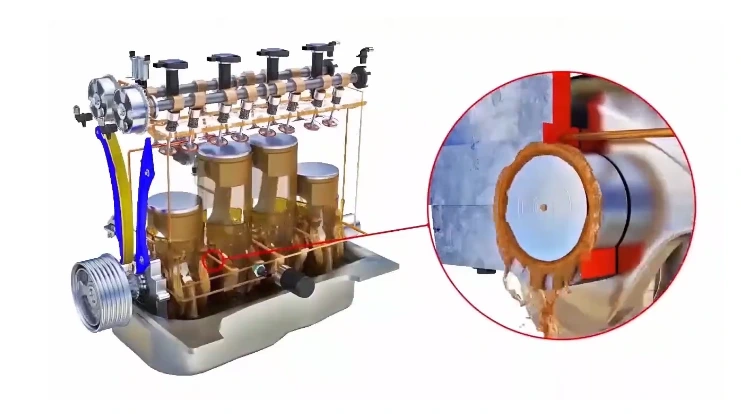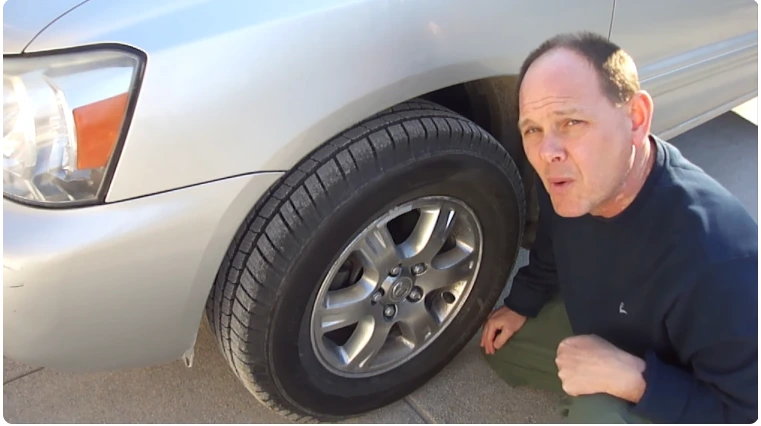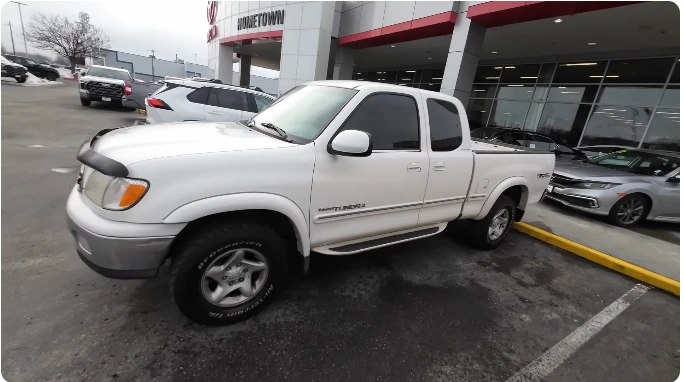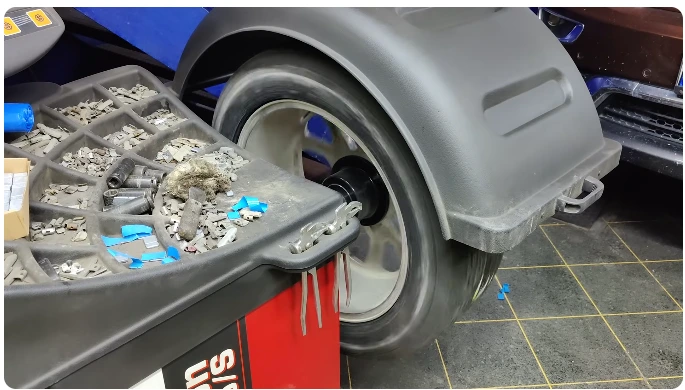How to Remove Paint Transfer And Scuffs From Cars [Expert Solutions]
To remove paint transfer and scuffs from cars, use a mixture of baking soda and water, apply it to the affected area, and gently rub with a cloth in circular motions. This diy method is effective and can help restore the car’s surface.
Paint transfer and scuffs are common issues that can occur while driving, but luckily, there are simple solutions to address them. By following the steps outlined above, you can remove paint transfer and scuffs from your car quickly and easily.
This article will provide additional tips and insights on how to keep your car looking its best and avoid further damage. So, whether you’re dealing with a minor scrape or more noticeable paint transfer, read on to learn how to restore your car’s appearance.
Understanding Paint Transfer And Scuffs
Paint transfer and scuffs can be a frustrating sight on your car’s pristine exterior. Whether it’s the result of a minor accident, careless parking, or unexpected contact with another object, these blemishes can detract from the overall appearance of your vehicle.
In this section, we will delve deeper into understanding paint transfer and scuffs, the types of scuffs and their causes, and how to identify the extent of the damage.
What Is Paint Transfer?
- Paint transfer occurs when the paint from another object, such as a bumper or another vehicle, is transferred onto the surface of your car.
- It can leave behind marks or streaks of color that are not present on your car’s original paint job.
- Paint transfer is most commonly seen as scuffs or scratches on the affected area.
Types Of Scuffs And Their Causes:
- Scuff marks: These are shallow marks on the surface of the paint, often caused when a soft or rubbery material comes into contact with the car.
- Scratch scuffs: Deeper than scuff marks, these occur when a harder material, like a key or metal object, scrapes against the car’s surface.
- Impact scuffs: These scuffs are caused by a forceful impact, like a collision or bumping into an object.
- Abrasive scuffs: These scuffs result from abrasive substances, such as sand or gravel, rubbing against the car’s paint.
Identifying the extent of the damage:
- Assess the scuff or paint transfer by carefully examining the affected area. Use good lighting and inspect the surface from different angles to get a comprehensive view.
- Run your fingers gently over the damaged area to feel for any irregularities in texture.
- If the scuff has only affected the clear coat, the damage is superficial and can often be remedied with basic fixes.
- However, if the scuff has penetrated through the clear coat and into the base coat or primer, it may require more extensive repair work.
Remember, understanding paint transfer, the types of scuffs, and assessing the damage accurately are crucial for successful removal and restoration of your car’s appearance. By identifying the extent of the damage, you can determine whether a simple diy solution will suffice or if professional intervention is necessary.
Preparing The Vehicle For Paint Transfer And Scuff Removal
Paint transfer and scuffs on cars can be unsightly and frustrating, but fortunately, they can be removed with the right techniques and tools. In this section, we will walk you through the process of preparing your vehicle for paint transfer and scuff removal.
By following these steps, you can ensure a successful and safe restoration of your car’s appearance. Let’s dive in!
Cleaning The Affected Area
Before beginning the paint transfer and scuff removal process, it’s crucial to thoroughly clean the affected area. This ensures the best possible outcome and prevents any further damage. Here’s what you need to do:
- Start by rinsing the area with clean water to remove any loose dirt or debris.
- Use a mild car soap or detergent to wash the area, ensuring that you cover the surrounding surfaces as well.
- Gently scrub the affected area with a soft sponge or microfiber cloth to remove any stubborn dirt or grime.
- Rinse the area again to remove any soap residue and pat it dry with a clean towel.
Gathering The Necessary Tools And Materials
Once you’ve cleaned the affected area, it’s time to gather the tools and materials you’ll need for the paint transfer and scuff removal process. Here’s a list of essential items:
- Microfiber cloths: These are ideal for gentle cleaning and drying without scratching the surface.
- Clay bar: A clay bar helps remove embedded contaminants and surface imperfections from the paint.
- Detailing spray or lubricant: This is used in conjunction with the clay bar to prevent scratching during the removal process.
- Automotive rubbing compound: This abrasive paste removes paint transfer and light scuffs from the surface.
- Dual-action polisher: This tool can be used with a foam pad to apply the rubbing compound effectively.
- Automotive wax or sealant: Applying wax or sealant after the removal process helps protect and restore the paint’s shine.
Ensuring Proper Ventilation And Safety Precautions
Before you begin the paint transfer and scuff removal process, it’s essential to ensure proper ventilation and take necessary safety precautions. Here’s what you need to keep in mind:
- Work in a well-ventilated area such as a garage with the doors open or outside in a shaded spot.
- Wear gloves and safety goggles to protect your hands and eyes from any chemicals or debris.
- Avoid working in direct sunlight or on a hot surface, as it can affect the effectiveness of the products used.
- Follow the manufacturer’s instructions for each product you use, and if you’re unsure, seek professional advice.
By following these steps to prepare your vehicle for paint transfer and scuff removal, you’re setting yourself up for success. With a clean surface and the right tools, you’ll be ready to tackle the next steps of the process. Stay tuned for our next section, where we’ll guide you through the actual removal techniques.
Expert Techniques For Removing Paint Transfer And Scuffs
Paint transfer and scuffs on cars can be unsightly and diminish the overall appearance of your vehicle. Fortunately, there are expert techniques that can help you remove paint transfer and scuffs, restoring your car to its former glory. Here are some tried and tested methods to consider:
Using A Clay Bar To Eliminate Paint Transfer
A clay bar is an effective tool for removing paint transfer, which occurs when paint from another surface adheres to your car’s finish. Follow these steps to use a clay bar effectively:
- Thoroughly wash and dry your car to remove any loose dirt or grime.
- Cut the clay bar into small sections and knead it until it becomes soft and pliable.
- Spray a lubricant, specifically designed for clay bars, onto the area you want to treat.
- Gently rub the clay bar back and forth over the affected area using light pressure. The clay will pick up any embedded contaminants and paint transfer.
- Frequently check the clay bar for accumulated debris and reshape it as needed.
- Once the area feels smooth to the touch, wipe away any remaining residue using a clean microfiber cloth.
- Apply a coat of wax or sealant to protect the newly cleaned surface.
Buffing And Polishing To Remove Minor Scuffs
For minor scuffs that haven’t penetrated the clear coat, buffing and polishing can work wonders. Here’s how to go about it:
- Begin by washing and drying your car to ensure a clean surface for the buffing process.
- Apply a small amount of rubbing compound or scratch remover to a microfiber cloth or foam applicator pad.
- Work the compound into the affected area using circular motions, applying gentle pressure.
- Continue buffing until the scuff begins to fade or disappear.
- Once satisfied, wipe away any residue with a clean cloth.
- For added shine, follow up with a polishing compound and a separate clean cloth.
- Apply a quality car wax to protect the freshly polished area.
Wet Sanding For Deeper Scratches And Scuffs
In cases where the scuffs or scratches are more severe, wet sanding may be necessary. This method requires caution and patience. Here’s a step-by-step guide:
- Start by washing and drying the affected area, ensuring it is completely clean.
- Fill a spray bottle with a mixture of water and a few drops of dish soap for lubrication during the wet sanding process.
- Submerge a sanding block or sandpaper (generally 2000-3000 grit) in a bucket of soapy water and let it soak for a few minutes.
- Spray the area to be sanded with the soap and water mixture.
- Begin wet sanding the scuffed or scratched area, using light pressure and making sure to keep the area wet at all times.
- Periodically rinse away any debris and inspect your progress.
- Continue sanding until the scuff or scratch is removed or significantly minimized.
- Once satisfied, dry the area and apply a polishing compound followed by a coat of wax to restore shine and protect the finish.
Remember, if you are uncertain about any of these techniques or the severity of the scuffs on your car, it is always best to consult a professional auto detailer or body shop. With the right tools and knowledge, you can tackle paint transfer and scuffs, bringing your car’s appearance back to its best.
Diy Solutions For Tackling Paint Transfer And Scuffs
Paint transfer and scuffs on cars can be an eyesore, but luckily there are several diy solutions you can try to tackle these issues. Whether you’re dealing with mild paint transfer or more stubborn marks, there are simple methods using ingredients you may already have at home.
Let’s explore three effective options for removing paint transfer and scuffs from cars.
Toothpaste As A Gentle Abrasive
Toothpaste isn’t just for your teeth – it can also serve as a gentle abrasive to remove paint transfer and scuffs from your car’s surface. Here’s how to use toothpaste effectively:
- Choose a non-gel toothpaste without any whitening agents or additives.
- Apply a small amount of toothpaste directly onto the scuff or paint transfer mark.
- Using a soft cloth or sponge, gently rub the toothpaste in circular motions.
- Continue rubbing until the paint transfer or scuff is no longer visible.
- Rinse the area with water and dry it with a clean cloth.
Toothpaste works well for lighter marks and can be a quick fix for minor scuffs on your car’s paintwork.
Baking Soda And Water Mixture For Stubborn Marks
For more stubborn marks, a mixture of baking soda and water can provide a slightly more abrasive solution. Here’s how to use it effectively:
- Create a paste by mixing baking soda with water until it forms a thick consistency.
- Apply the paste to the affected area, focusing on the paint transfer or scuff mark.
- Gently rub the mixture into the mark using a soft cloth or sponge.
- Continue rubbing until the paint transfer or scuff starts to fade.
- Rinse the area with water and dry it thoroughly.
The baking soda mixture can be a more powerful option for tougher stains, but it’s important to be gentle to avoid damaging the paint.
Vinegar Or Rubbing Alcohol For Tougher Stains
In some cases, tougher stains may require a stronger solution like vinegar or rubbing alcohol. Here’s how to use these ingredients effectively:
- Soak a clean cloth or sponge with either vinegar or rubbing alcohol.
- Gently rub the stained area, focusing on the paint transfer or scuff mark.
- Continue rubbing until the stain starts to diminish.
- Rinse the area with water and dry it thoroughly.
Both vinegar and rubbing alcohol have strong cleaning properties that can help remove more stubborn marks. However, avoid using these solutions on sensitive surfaces or areas with easily damaged paint.
By using toothpaste, a baking soda and water mixture, or vinegar and rubbing alcohol, you can effectively tackle paint transfer and scuffs on your car. Remember to test any solution on a small, inconspicuous area before applying it to the entire affected area.
With these diy solutions, you can restore your car’s paintwork to its former glory.
Preventing Future Paint Transfer And Scuffs
Paint transfer and scuffs can be frustrating and unsightly, but there are steps you can take to prevent future damage. By implementing simple practices and investing in protective measures, you can help maintain the beauty and integrity of your car’s paint job.
Here are some tips for preventing future paint transfer and scuffs.
Regular Washing And Waxing
Regular washing and waxing is essential in keeping your car’s paint in great condition. This routine maintenance helps protect the paint from environmental debris and also creates a barrier that makes it more difficult for paint transfer and scuffs to occur.
Here are some key points to consider:
- Wash your car at least once a week using a mild car wash soap.
- Use a soft microfiber cloth or sponge to avoid scratching the paint.
- Pay special attention to areas where paint transfer and scuffs commonly occur, such as the doors, bumpers, and side mirrors.
- After washing, apply a coat of wax to add an extra layer of protection.
By establishing a regular washing and waxing routine, you can minimize the risk of paint transfer and scuffs, while also keeping your car looking its best.
Using A Protective Film Or Clear Bra
One effective way to prevent paint transfer and scuffs is by using a protective film or clear bra. This transparent film is applied to the vulnerable areas of your car’s exterior, creating a protective barrier against scratches, scuffs, and paint transfer.
Here are some key points to consider:
- Consult with a professional to determine the best type of protective film for your car.
- The film can be applied to areas such as the front bumper, hood, side mirrors, and door edges.
- The protective film is virtually invisible, allowing your car’s paint color to shine through without any compromise to its aesthetic appeal.
Investing in a protective film or clear bra is a proactive step towards preventing future paint transfer and scuffs. It offers peace of mind knowing that your car is well-protected from outside elements.
Avoiding Close Contact With Other Vehicles And Objects
One of the easiest ways to prevent paint transfer and scuffs is by exercising caution and avoiding close contact with other vehicles and objects. While accidents can happen, being mindful of your surroundings and taking preventative measures can greatly reduce the likelihood of paint damage.
Here are some key points to consider:
- Park your car in a safe distance from other vehicles, especially in crowded parking lots.
- Be cautious when opening your car doors to avoid hitting nearby objects or other vehicles.
- When driving, maintain a safe distance from the car in front of you to minimize the risk of paint transfer due to debris or sudden stops.
- If possible, avoid parking under trees or areas where there may be branches or falling objects that could cause damage to your car’s paint.
By practicing safe driving and parking habits, you can significantly decrease the chances of paint transfer and scuffs, keeping your car looking its best for years to come.
Remember, preventative measures are key when it comes to maintaining the beauty and longevity of your car’s paint job. By regularly washing and waxing, using a protective film or clear bra, and avoiding close contact with other vehicles and objects, you can effectively prevent future paint transfer and scuffs.
Take the necessary steps to protect your investment and enjoy a pristine car that turns heads wherever you go.
When To Seek Professional Help
If you’ve tried removing paint transfer and scuffs from your car but haven’t achieved the desired results, it might be time to consider seeking professional help. While some minor damages can be easily fixed at home, more severe cases require the expertise of professional detailing services.
Here are some key points to consider when determining whether to seek professional assistance:
Assessing the severity of the damage:
- Take a close look at the affected area and evaluate the extent of the paint transfer and scuffs. If the damage covers a large surface area or is particularly deep, professional help might be required.
- Consider the type of paint damage. If the paint is deeply scratched or has been completely removed, professional repair is likely necessary.
- Assess your own diy skills and resources. If you do not have access to the right tools, products, or expertise, it’s best to rely on professionals who can ensure high-quality repairs.
Benefits of professional detailing services:
- Expertise: Professional detailers have the necessary skills and experience to assess and repair paint transfer and scuffs effectively. They understand the intricacies of car paint and know the best techniques and products to use for each situation.
- Superior results: Professional detailing services can often achieve better results than diy methods. They have access to specialized equipment and high-quality products, which can result in a more thorough and long-lasting repair.
- Time-saving: Removing paint transfer and scuffs can be a time-consuming process, especially for beginners. By opting for professional services, you can save time and have the peace of mind that your car will be professionally repaired.
Cost considerations for professional repair:
- Compare costs: Before seeking professional help, it’s worth evaluating the cost of repairs versus the value of your car. For minor damages, it might be more cost-effective to try diy methods first. However, for more significant damage, professional repair could be worth the investment.
- Insurance coverage: If your car is covered by insurance, it’s worth checking if paint transfer and scuffs are included in your policy. In some cases, insurance might cover part or all of the costs of professional repairs.
- Long-term value: Investing in professional repair can help maintain the value of your car. By fixing paint transfer and scuffs promptly and accurately, you can prevent further damage and potential rusting, which could affect your car’s resale value.
Remember, while diy methods can work in some cases, seeking professional help ensures a higher chance of achieving the best results. By assessing the severity of the damage, considering the benefits of professional detailing services, and weighing the cost considerations, you can make an informed decision on whether to seek professional help for your paint transfer and scuff removal needs.
Conclusion
Removing paint transfer and scuffs from cars can seem like a daunting task, but with the right techniques and products, it can be easily accomplished. Regular maintenance is key to ensuring your car’s paint remains in top condition, but accidents happen, and paint transfer and scuffs are inevitable.
By following the steps outlined in this blog post, you can effectively remove these imperfections and restore your car’s appearance. First, identify the extent of the damage and clean the affected area. Next, use a clay bar or abrasive compound to gently remove the paint transfer or scuff marks.
If necessary, apply a moderate amount of pressure, being mindful not to damage the surrounding paintwork. Finally, polish and wax the area to restore the shine and protect the paint. Remember, prevention is always better than cure. Taking proactive measures such as regularly waxing your car, avoiding parking in high-risk areas, and being mindful of other vehicles can minimize the likelihood of paint transfer and scuffs.
By following these guidelines and employing a little patience, you can keep your car looking its best and maintain its value. So, roll up your sleeves, grab the necessary supplies, and restore your car’s paint to its former glory. Your vehicle will thank you for it!




